By Luca Pfeiffer/DWR
Photos by Luca Pfeiffer/DWR
It was a cold winter morning, and I was home in Virginia Beach for the holidays, staking out the bald eagles nesting at my favorite local wildlife photography spot, Stumpy Lake Natural Area. I watched in awe as an adult eagle swooped down and clawed a fish from the water and chuckled as I watched the young immature eagles try and do the same.
Though unsuccessful, one young bird’s attempt made for an incredible photograph as the golden light shone through the surrounding cypress trees at sunrise.

As I waited behind my tripod for the eagles to return, two photographers I’d met previously arrived at the location. After a lengthy discussion of camera gear, recent wildlife encounters, and go-to spots, one of them had to leave to catch his whale-watching tour. I was shocked! This was the first time I ever learned that humpback whales migrate right off the coast of Virginia Beach. As soon as I got home, I bought a ticket for the next available tour, eager to see the magnificent mammals for myself.
The day of my tour was an overcast, fog-filled, and windy afternoon. Nonetheless, I was incredibly excited to see what marine creatures might emerge from the coastal mist and stepped foot on my first whale-watching boat.
Within minutes of leaving the dock, a group of bottlenose dolphins began to follow us, performing magnificent leaps out of the water using our boat’s wake as an aquatic ramp. I rushed to the stern to try and capture some close-up action shots with my 300mm 2.8 lens as they emerged from the frigid water at high speeds.
The resulting images showcased every scratch, scar, and marking on these beautiful creatures, revealing a unique texture palette that showcased each individual’s life experiences. According to the guides on board, this wake-riding behavior is both an efficient way for the dolphins to travel and also just plain fun!
After this initial encounter, the next hour of our tour was unquestionably quiet. Without any wildlife in sight, I turned my lens to capture the Virginia Beach oceanfront shrouded in an eerie mist. Only the tops of the buildings were visible as they rose through the thick fog looking like they could have easily been a set piece for a new Netflix sci-fi series.
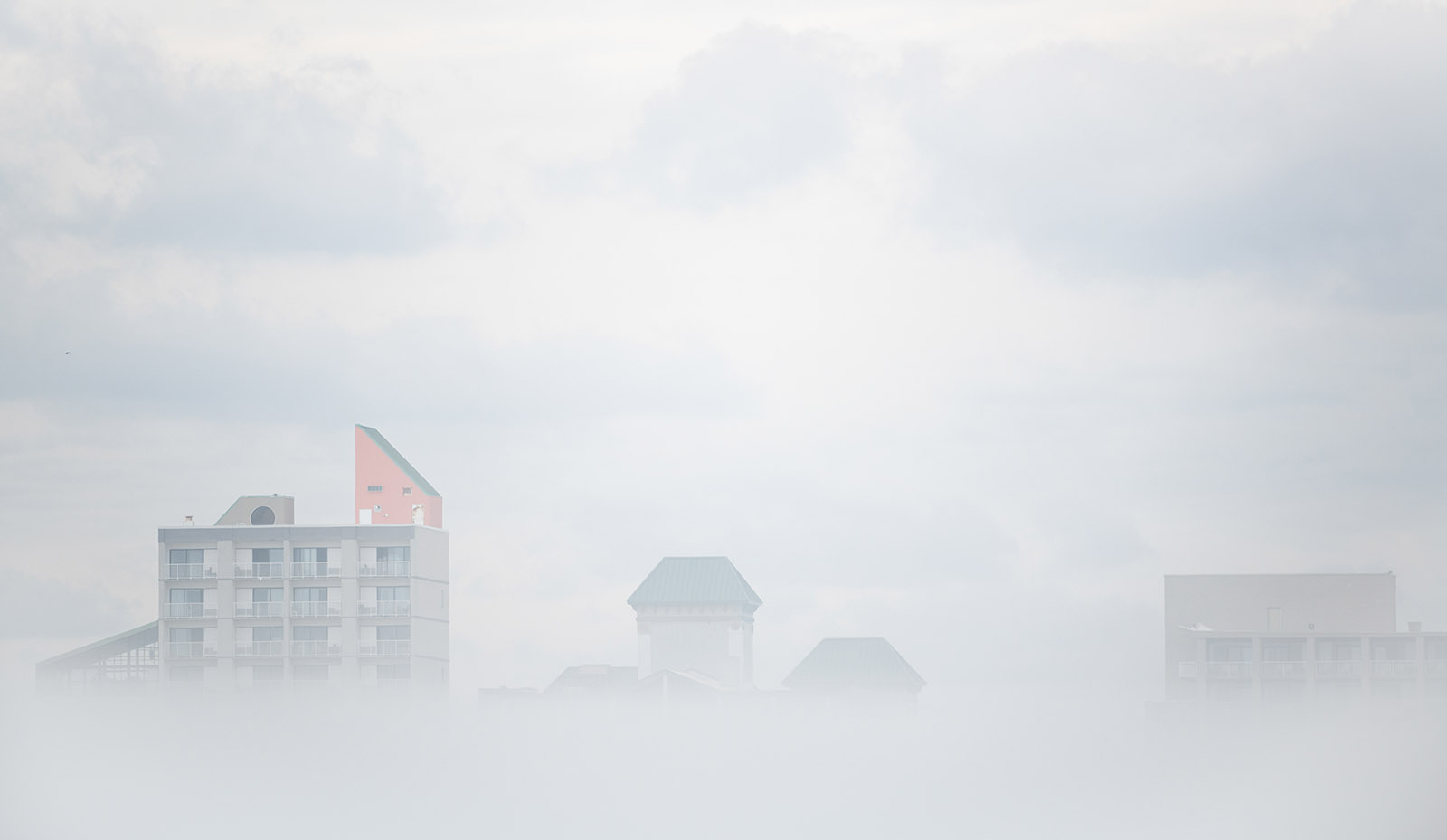
As we ventured further off the coast, we began to see some signs of aquatic life. Large flocks of species I had previously only seen in my set of Sea and Coastal Bird playing cards crowded the ocean’s surface.
Every few minutes, a red-throated loon or northern gannet would pierce through the haze and fly overhead, giving me barely enough time to ready my camera and capture some action shots. We even got to see a couple of razorbills—who were certainly the shyest of the species we encountered. Luckily, one stuck around long enough for a decent photo.
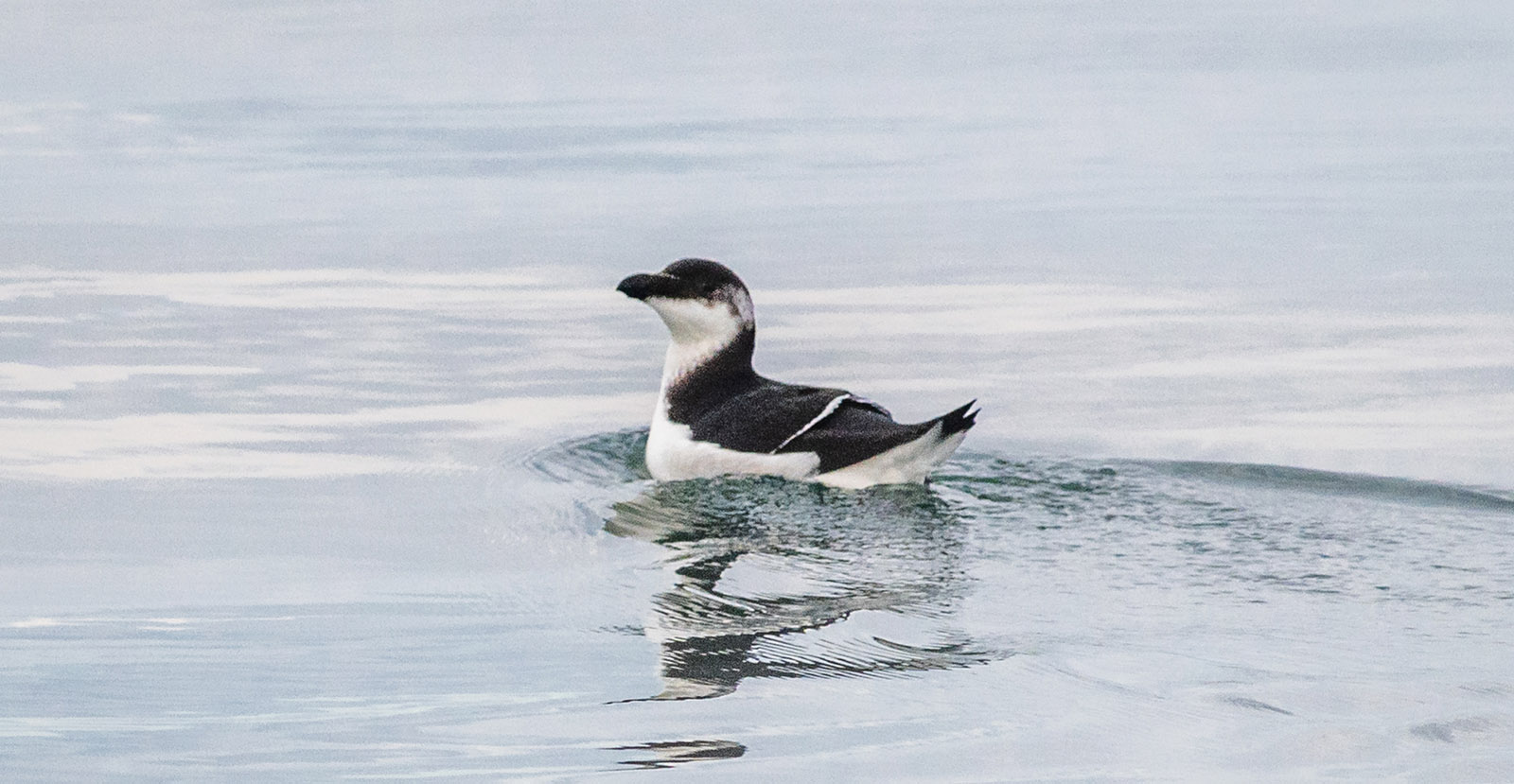
The elusive razorbill.
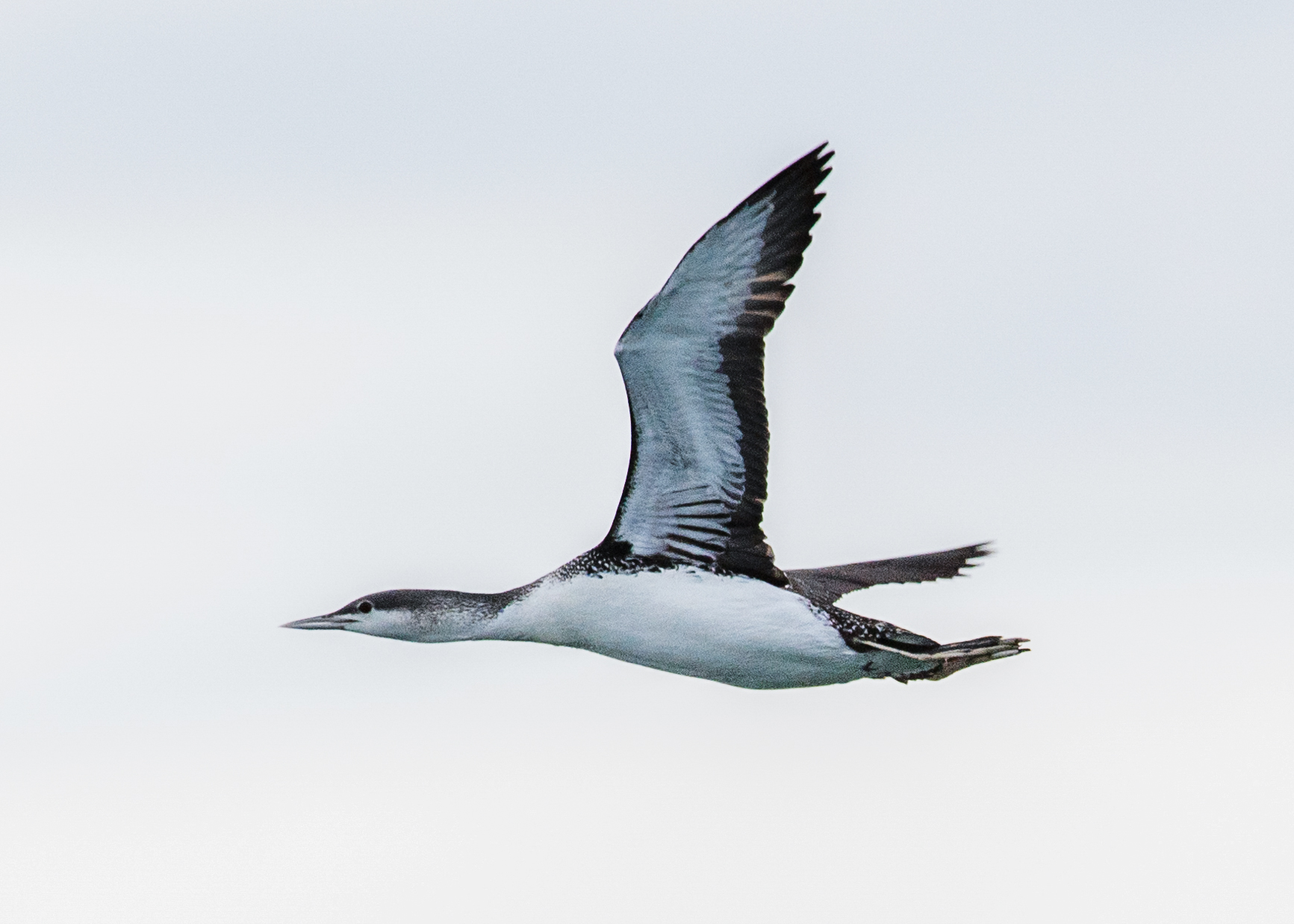
A red-throated loon in flight.
As our two hours were almost up, we steered toward the harbor and prepared for our return. Though we did not get the whale experience I was hoping for, I was incredibly content with the dolphin and seabird sightings and gleefully scrolling through the images on my camera. However, as our boat began to approach the coastline, a massive humpback whale suddenly appeared 100 feet ahead between us and the harbor.
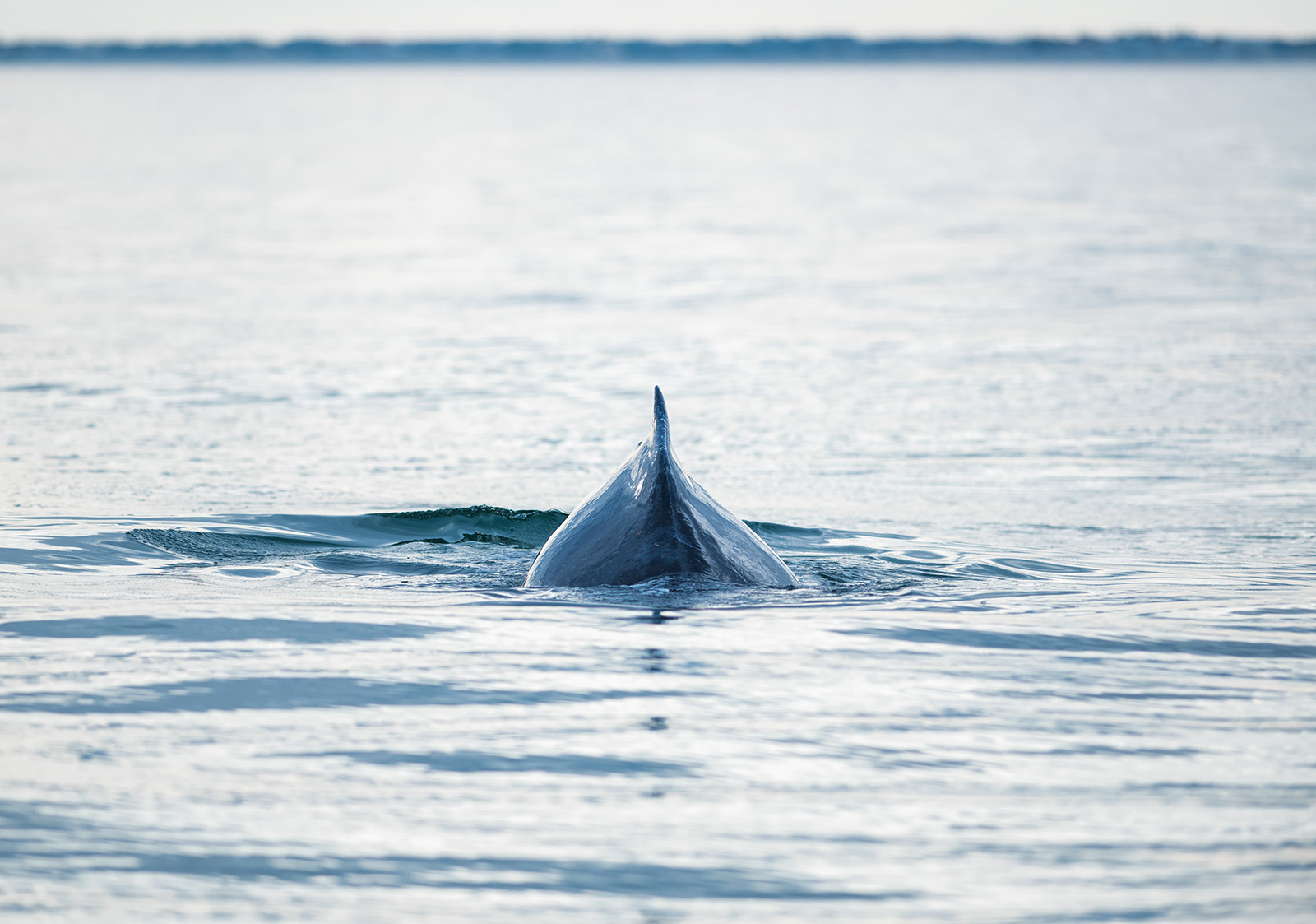
The captain immediately shut off our boat’s engine as per safety guidelines, and, much to our surprise, the whale began approaching us. Within minutes, the colossal creature was only a couple of feet away from me and my 300mm lens. This curious mammal started to circle our boat and would occasionally break through the surface to splash its massive pectoral fins and blast water from out its blowhole.
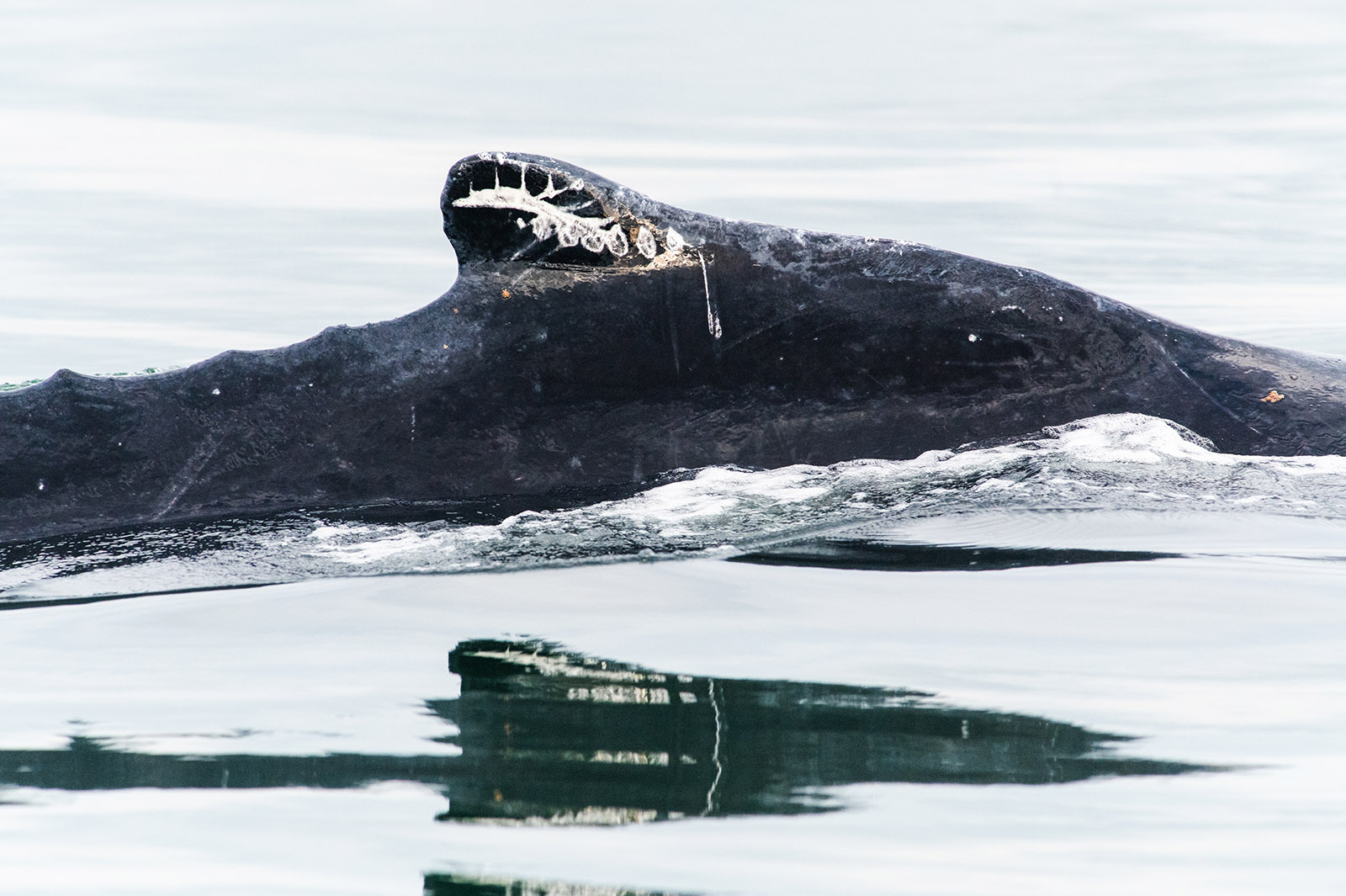
According to our guide, this was a behavior known as “mugging,” where friendly whales approach and swim around a vessel out of curiosity. The whale even got close enough for me to fill my frame with its dorsal fins that I was able to capture details I couldn’t even see with my naked eye, like the whale louse and barnacles hitching a free ride.

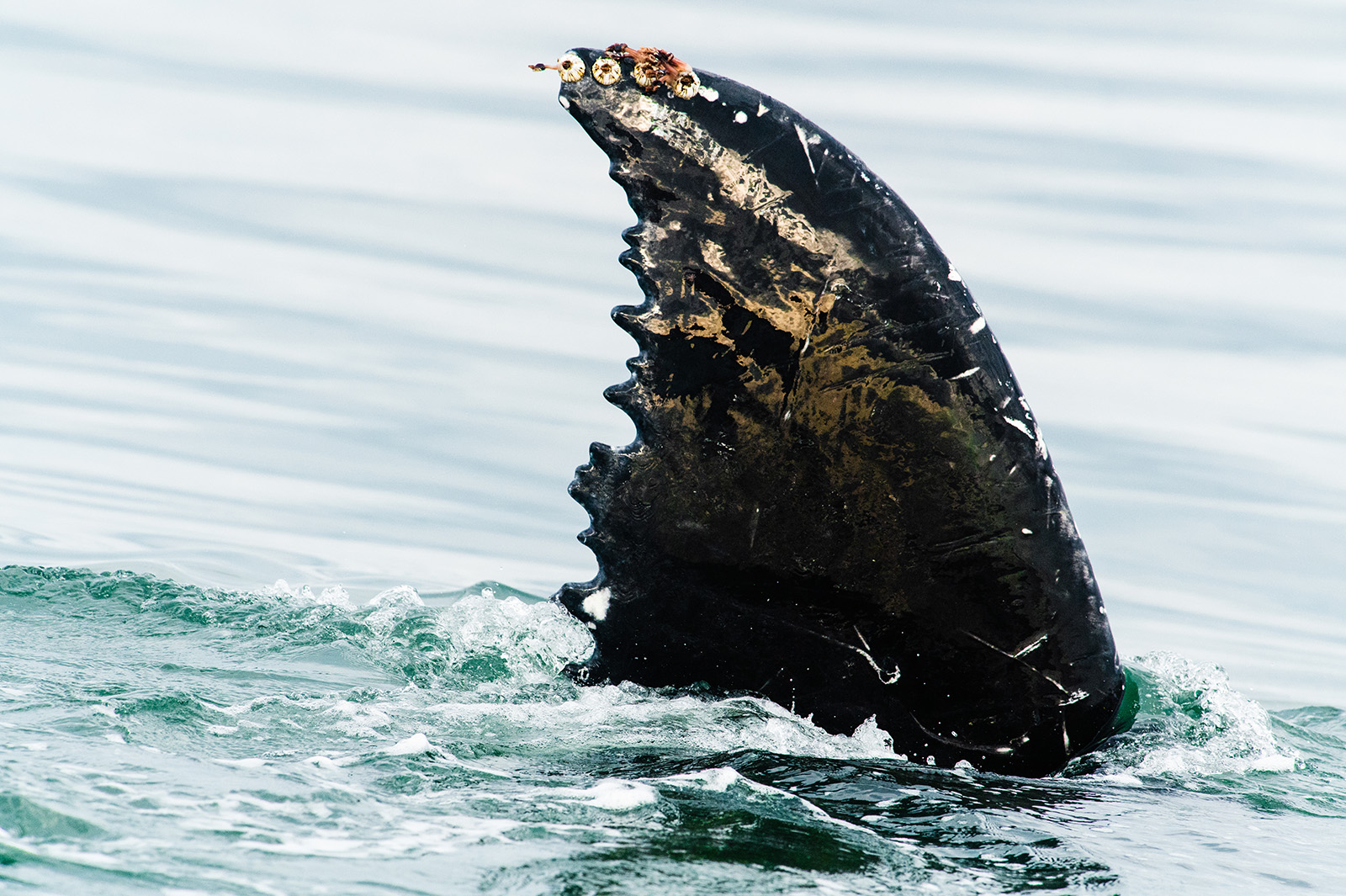 Though we were now well over our two-hour time slot, we had to wait for the giant to stray far enough away from our boat so our engine would not damage or disturb it. Once it got its human-watching fix, the inquisitive mammal parted ways with us and continued with its daily routine of feeding, swimming, singing, and socializing.
Though we were now well over our two-hour time slot, we had to wait for the giant to stray far enough away from our boat so our engine would not damage or disturb it. Once it got its human-watching fix, the inquisitive mammal parted ways with us and continued with its daily routine of feeding, swimming, singing, and socializing.
As we journeyed home, the clouds finally parted and allowed the sun’s golden rays to shine through, masterfully lighting the endless stream of seabirds fluttering over the ocean’s surface. Though the light was perfect, photographing flying birds on a fast-moving boat presented new challenges and rewards and was yet another unexpected treat perfectly wrapping up our marine adventure.
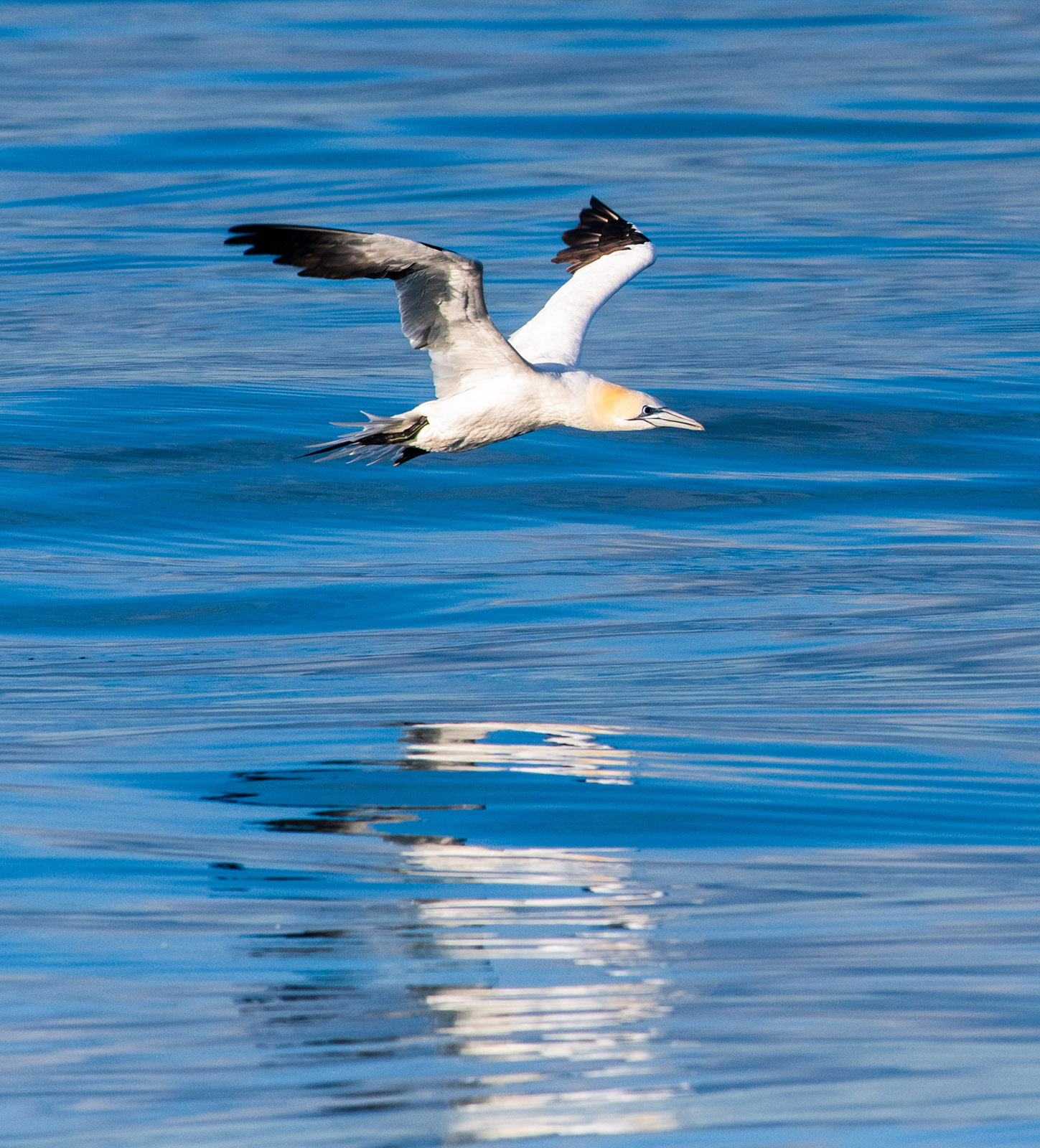
A northern gannet at golden hour.
Our initial encounter with the dolphins made the trip well worth it, and though the following hour was rather quiet, seeing the Virginia Beach coastline blanketed in fog was equally as memorable. I saw several new seabird species and got to experience the breathtaking presence of a humpback whale first-hand. We are so lucky to have graceful creatures visit our coasts each winter. I am still shocked that I only learned about their migration to Virginia Beach a few days before I hopped on my first tour. If it wasn’t for the friendly photographers at Stumpy Lake, I probably would have remained ignorant about our local whales for quite some time. Though online resources can provide a great deal of information when it comes to wildlife viewing opportunities, these kinds of personal interactions always teach me new local information I wouldn’t have otherwise searched for.
Next time you’re out in the field chasing your next photograph or viewing experience, being open and friendly to those you come across can really pay off. These impromptu conversations can genuinely elevate your understanding of the local ecosystem as well as how the surrounding community interacts with it. Just try your best to not scare any skittish birds (or whales) before saying hello.
Luca Pfeiffer is a wildlife photographer, workshop instructor, and DWR Virginia Bird and Wildlife Trail Assistant.


